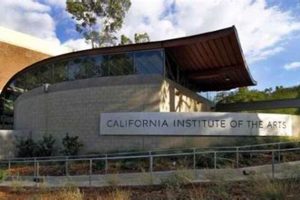Determining a single “best” art school globally is subjective and depends heavily on individual artistic goals, preferred learning styles, and specific program interests. Factors such as faculty expertise, available resources, alumni success, networking opportunities, and geographic location all contribute to an institution’s overall prestige and suitability for a particular student. While no universally accepted ranking exists, prominent institutions frequently cited for excellence in arts education include the Royal College of Art, Parsons School of Design, and Central Saint Martins.
A top-tier art education can provide aspiring artists with the technical skills, critical thinking abilities, and creative networks necessary to thrive in the competitive art world. Historically, renowned art academies have served as incubators for groundbreaking artistic movements and have shaped the evolution of artistic expression. Access to expert mentorship, specialized facilities, and a vibrant community of fellow artists can significantly enhance an individual’s artistic development and career trajectory.
This exploration delves into the key criteria for evaluating art schools, examines the strengths of various leading institutions, and discusses the evolving landscape of art education in the 21st century. Further sections will analyze the influence of technology on artistic practice, consider the role of art schools in fostering innovation, and explore the diverse career paths available to graduates.
Tips for Selecting a Leading Art School
Choosing the right art program is crucial for artistic development and career success. The following considerations offer guidance for navigating the complex landscape of art education.
Tip 1: Define Artistic Objectives. Clearly articulate personal artistic goals and identify programs aligned with those aspirations. Specializations within the arts vary widely, from traditional painting and sculpture to emerging digital media and interdisciplinary practices.
Tip 2: Research Faculty Expertise. Investigate the backgrounds and accomplishments of faculty members. Seek programs with instructors actively engaged in professional practice and recognized for their contributions to the field.
Tip 3: Evaluate Available Resources. Access to state-of-the-art facilities, specialized equipment, and extensive library resources can significantly enhance the learning experience. Consider studio space, technology infrastructure, and access to archives or special collections.
Tip 4: Consider Institutional Reputation and Alumni Success. Research an institution’s history, its standing within the art world, and the accomplishments of its alumni. Alumni networks can provide valuable mentorship and career opportunities.
Tip 5: Explore Location and Cultural Context. Geographic location can influence artistic inspiration and networking potential. Consider the cultural environment and its relevance to individual artistic interests.
Tip 6: Assess Program Structure and Curriculum. Examine the curriculum’s breadth and depth, and determine whether it aligns with personal learning preferences. Consider the balance between theoretical coursework, studio practice, and critical analysis.
Tip 7: Investigate Financial Aid and Scholarship Opportunities. Art education can be a significant investment. Thoroughly research available financial aid options and scholarship programs to mitigate costs.
Careful consideration of these factors will empower prospective students to make informed decisions and select the educational environment best suited to their individual needs and aspirations.
This exploration of key selection criteria provides a framework for navigating the art school landscape. The concluding section will synthesize these considerations and offer final recommendations for prospective art students.
1. Reputation and Prestige
Reputation and prestige play a significant role in shaping perceptions of leading art schools. While not solely deterministic of quality, these factors often reflect a history of distinguished faculty, successful alumni, impactful research, and competitive admissions. Understanding how reputation is built and maintained provides valuable context for evaluating art institutions.
- Institutional History and Legacy
Long-standing institutions often benefit from a rich history of contributions to the art world. Their legacy, built over decades or even centuries, can signify a sustained commitment to artistic excellence. For example, institutions like the cole des Beaux-Arts in Paris carry a historical weight that influences their perceived prestige.
- Faculty Accomplishments and Recognition
The accomplishments and recognition of faculty members contribute significantly to an institution’s reputation. Faculty who are actively exhibiting, publishing, and receiving awards in their respective fields enhance the school’s credibility and attract talented students. The presence of renowned artists and scholars within a faculty can elevate an institution’s standing.
- Alumni Success and Influence
The success and influence of alumni often serve as a key indicator of an art school’s effectiveness. Graduates who achieve prominence in the art world, whether as artists, curators, or scholars, reflect positively on the institution’s training and mentorship. Tracking alumni careers provides insights into the potential impact of a particular program.
- Selectivity and Admissions Standards
Highly selective admissions processes can contribute to an institution’s perceived prestige. A rigorous selection process, often involving portfolio reviews, interviews, and academic requirements, suggests a commitment to attracting and nurturing exceptional talent. The competitiveness of admissions can become a marker of exclusivity and perceived quality.
These interwoven factors contribute to the overall reputation and prestige of an art school, influencing its perceived standing within the art world and its attractiveness to prospective students. While reputation serves as an important consideration, it is crucial to evaluate these contributing elements individually to gain a comprehensive understanding of an institution’s strengths and weaknesses. A balanced assessment, incorporating both qualitative and quantitative measures, provides the most informed basis for evaluating art schools.
2. Faculty Expertise
Faculty expertise stands as a cornerstone of any leading art institution. The quality of instruction directly impacts student development, shaping artistic skills, critical thinking, and creative exploration. A distinguished faculty elevates an art school’s reputation and contributes significantly to its overall excellence.
- Professional Accomplishments and Recognition
Faculty members actively engaged in professional practice, exhibiting their work, publishing research, and receiving accolades within the art world, bring invaluable real-world experience to the classroom. For instance, a professor with a successful exhibition record can offer unique insights into the gallery system and the professional art market. These accomplishments enhance an institution’s credibility and attract talented students seeking mentorship from established artists and scholars.
- Diversity of Specializations and Perspectives
A diverse faculty representing a range of artistic disciplines and perspectives enriches the learning environment. Exposure to diverse approaches and methodologies broadens students’ artistic horizons and fosters interdisciplinary dialogue. A school with faculty specializing in painting, sculpture, digital media, and art history offers students a more comprehensive understanding of the art world’s complexities.
- Teaching Philosophy and Mentorship
Effective teaching goes beyond technical instruction; it involves fostering critical thinking, nurturing creativity, and providing individualized mentorship. Faculty members dedicated to student development and invested in their individual growth create a supportive learning environment that empowers artistic exploration. A strong emphasis on mentorship can significantly impact student trajectory and long-term success.
- Industry Connections and Networks
Faculty with strong industry connections can provide students with valuable networking opportunities, internships, and exposure to the professional art world. Connections to galleries, museums, and art organizations can facilitate career development and provide pathways for post-graduate success. A faculty well-integrated into the professional art world offers students a significant advantage in navigating the competitive landscape.
The collective expertise of a faculty shapes the overall educational experience, contributing significantly to an art school’s standing within the art world. Institutions prioritizing faculty development and recognizing the importance of experienced, engaged, and diverse instructors cultivate an environment conducive to artistic growth and professional success. Therefore, faculty expertise serves as a key differentiator when assessing and comparing art schools globally.
3. Resources and Facilities
Access to state-of-the-art resources and facilities significantly influences the quality of artistic training and the overall educational experience. A well-equipped institution provides students with the tools and environment necessary to explore diverse artistic mediums, develop technical skills, and realize ambitious creative projects. The availability of specialized equipment, studio spaces, and technological resources plays a crucial role in determining an art school’s ability to support student growth and foster innovation. This section examines the crucial role of resources and facilities in shaping a world-class art education.
- Studio Spaces
Dedicated studio spaces provide students with designated areas for individual and collaborative work. Well-designed studios offer ample space, natural light, and appropriate ventilation for various artistic practices. Specialized studios for painting, sculpture, printmaking, ceramics, and other disciplines provide tailored environments that enhance creative exploration. For example, institutions like the Yale School of Art offer expansive studio spaces tailored to specific artistic needs, fostering a productive and inspiring work environment.
- Specialized Equipment and Technology
Access to cutting-edge equipment and technology is essential for contemporary artistic practice. Institutions equipped with industry-standard software, 3D printers, laser cutters, digital fabrication tools, and advanced photographic equipment empower students to explore diverse creative avenues and acquire in-demand technical skills. The Rhode Island School of Design (RISD) is renowned for its advanced technological resources, enabling students to engage with emerging digital art forms.
- Library and Research Resources
Extensive library collections, digital archives, and specialized research resources support artistic scholarship and provide students with access to a wealth of information. Comprehensive art libraries housing books, journals, periodicals, and digital databases enrich research capabilities and foster critical analysis. Institutions like the Courtauld Institute of Art in London are renowned for their exceptional art historical libraries and research facilities.
- Exhibition and Gallery Spaces
Opportunities to exhibit artwork in professional gallery settings provide invaluable experience and exposure. On-campus galleries, exhibition spaces, and partnerships with external venues offer students platforms to showcase their work, engage with the public, and gain experience in the professional art world. Schools like the California Institute of the Arts (CalArts) boast vibrant on-campus galleries and active exhibition programs that provide students with real-world exhibition experience.
The quality and availability of resources and facilities directly impact the learning experience and contribute significantly to an art school’s overall standing. Institutions that prioritize investment in state-of-the-art resources demonstrate a commitment to providing students with the tools they need to thrive in the competitive art world. By offering access to well-equipped studios, advanced technology, extensive research materials, and exhibition opportunities, leading art schools empower students to develop their artistic potential and achieve professional success. Therefore, the assessment of resources and facilities serves as a crucial component in determining an institution’s ability to deliver a world-class art education.
4. Alumni Network
A robust alumni network constitutes a significant factor in evaluating leading art institutions. The strength and engagement of an alumni community can significantly impact a graduate’s career trajectory, providing access to mentorship, professional opportunities, and a supportive network of peers. Examining the characteristics and contributions of a thriving alumni network offers valuable insights into an art school’s overall impact and its commitment to long-term student success. A strong alumni network often reflects the quality of education and the enduring connections fostered within the institution.
- Mentorship and Guidance
Established alumni often serve as mentors for recent graduates, providing guidance on navigating the professional art world. This mentorship can take various forms, including portfolio reviews, career advice, and introductions to industry contacts. For example, alumni of the Slade School of Fine Art in London often mentor emerging artists from their alma mater, facilitating their transition into professional practice.
- Networking Opportunities and Professional Connections
A strong alumni network facilitates valuable networking opportunities, connecting graduates with established professionals in diverse fields. These connections can lead to collaborations, exhibitions, and employment opportunities. The alumni network of Parsons School of Design, known for its extensive reach within the fashion and design industries, provides graduates with access to a vast professional network.
- Community Building and Support
Alumni networks foster a sense of community and provide ongoing support for graduates throughout their careers. Alumni events, online forums, and regional chapters create platforms for connection, collaboration, and mutual support. The Glasgow School of Art maintains a highly active alumni association that organizes events and fosters a strong sense of community among its graduates.
- Contributions to the Institution and Future Generations
Successful alumni often contribute back to their alma mater through guest lectures, workshops, and financial support. These contributions enrich the educational experience for current students and demonstrate a commitment to the institution’s continued success. Alumni of the Maryland Institute College of Art (MICA) frequently return to campus to conduct workshops and share their professional experiences with current students.
The strength and engagement of an alumni network reflect an art school’s ability to cultivate lasting relationships and provide ongoing support for its graduates. A thriving alumni community contributes significantly to an institution’s reputation and serves as a valuable resource for both current students and alumni. By fostering mentorship, networking opportunities, and a strong sense of community, leading art schools empower their graduates to achieve professional success and contribute to the broader art world. Therefore, evaluating the depth and breadth of an alumni network offers critical insights into an institution’s overall impact and its commitment to nurturing artistic talent.
5. Curriculum and Pedagogy
Curriculum and pedagogy are integral to defining a leading art institution. A thoughtfully designed curriculum provides a structured framework for artistic exploration, skill development, and critical analysis. Effective pedagogy, encompassing teaching methodologies and approaches to learning, shapes how students engage with the curriculum and develop their artistic voices. The interplay between curriculum and pedagogy directly influences the quality of education and contributes significantly to an art school’s overall standing.
A rigorous curriculum often balances studio practice, art history, theory, and professional practice components. For example, the curriculum at the Stdelschule in Frankfurt emphasizes critical theory and conceptual development alongside studio work, fostering a nuanced understanding of contemporary art practices. Conversely, a program like the School of the Art Institute of Chicago (SAIC) offers a broader curriculum encompassing diverse disciplines, allowing students to explore a wider range of artistic mediums and approaches. The effectiveness of these curricula relies heavily on the pedagogical approaches employed. A studio-based course might prioritize individualized instruction and critique, while a seminar on art history might emphasize discussion and research. Institutions that adopt innovative pedagogical approaches, incorporating emerging technologies, interdisciplinary collaborations, and experiential learning, often cultivate a more dynamic and engaging learning environment. For instance, the MIT Media Lab integrates technology and art in its curriculum, encouraging experimental and collaborative projects that push the boundaries of artistic expression. This integration demonstrates how a forward-thinking pedagogy can enhance a curriculum and contribute to a school’s reputation for innovation.
Understanding the relationship between curriculum and pedagogy provides valuable insights into an art school’s educational philosophy and its approach to artistic development. A well-structured curriculum, combined with effective pedagogical practices, empowers students to acquire essential skills, cultivate critical thinking, and develop their individual artistic voices. The ability of an institution to adapt its curriculum and pedagogy to evolving artistic trends and technological advancements contributes significantly to its long-term relevance and its capacity to produce successful graduates. Therefore, evaluating the curriculum and pedagogical approach of an art school offers critical insights into its educational effectiveness and its potential to shape the future of the art world. Choosing an institution with a curriculum and pedagogical approach aligned with individual learning styles and artistic goals is essential for maximizing artistic growth and professional development.
Frequently Asked Questions
This section addresses common inquiries regarding the complexities of identifying and evaluating leading art institutions globally.
Question 1: Does a “best” art school truly exist?
The notion of a single “best” art school is subjective. Optimal educational environments depend on individual artistic goals, preferred learning styles, and specific program interests. Factors such as faculty expertise, resources, and location influence an institution’s suitability for a particular student.
Question 2: How does institutional reputation impact career prospects?
While reputation holds weight, it doesn’t guarantee success. A strong portfolio, developed skills, and networking efforts are equally crucial for career advancement. Reputation can open doors, but individual initiative determines long-term outcomes.
Question 3: What role do faculty play in artistic development?
Faculty expertise directly influences student learning. Experienced instructors provide mentorship, technical guidance, and critical feedback, shaping artistic skills and conceptual understanding. Seeking programs with accomplished faculty in one’s area of interest is essential.
Question 4: Are resources and facilities crucial for artistic training?
Access to well-equipped studios, specialized technology, and extensive library resources significantly enhances artistic development. State-of-the-art facilities enable experimentation, skill acquisition, and the realization of ambitious projects. Evaluating available resources is a crucial aspect of selecting an art school.
Question 5: How does location influence the educational experience?
Geographic location impacts exposure to artistic communities, cultural institutions, and professional networks. Urban centers often provide greater access to galleries, museums, and industry events. Considering location in relation to career aspirations is advisable.
Question 6: What is the significance of an alumni network?
A strong alumni network offers valuable mentorship, networking opportunities, and career support. Connecting with established professionals within one’s field can facilitate career advancement and provide access to a supportive community of peers.
Careful consideration of these frequently asked questions provides a more comprehensive understanding of the complexities involved in selecting an appropriate art education. Prioritizing individual needs and aspirations alongside institutional characteristics enables informed decision-making and increases the likelihood of a successful and fulfilling artistic journey.
This FAQ section offers a starting point for further research and encourages prospective students to explore individual institutional websites, connect with current students and alumni, and attend virtual or in-person information sessions. The following section will provide a comparative analysis of several prominent art schools worldwide.
Conclusion
Determining the “best” art school remains a subjective endeavor, contingent upon individual artistic aspirations, preferred learning styles, and specific program requirements. This exploration has highlighted the multifaceted nature of evaluating leading art institutions globally, emphasizing the importance of factors such as faculty expertise, available resources, alumni networks, curriculum design, and geographic location. While no single institution universally satisfies every individual’s needs, careful consideration of these criteria empowers prospective students to identify programs aligned with their unique objectives.
The pursuit of artistic excellence necessitates a thoughtful and informed approach to educational choices. Prospective students are encouraged to engage in thorough research, connect with current students and alumni, and critically assess institutional offerings in relation to their personal artistic visions. The evolving landscape of art education demands adaptability, innovation, and a commitment to lifelong learning. By embracing these principles, aspiring artists can navigate the dynamic art world and contribute meaningfully to the ongoing evolution of artistic expression.







